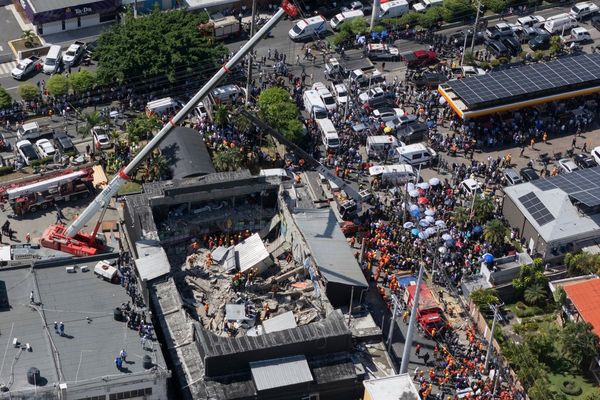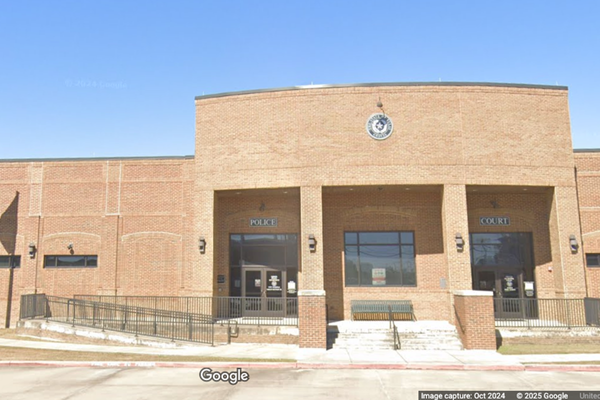The Tesla Supercharger cooling fan whirred to life. The contactors clicked. The second indicator on our 2024 Ford Mustang Mach-E tester went blue. For the first time, I was charging a non-Tesla EV on a Tesla charger. It felt seamless. Two minutes later, the session failed. Then it failed again.
After swapping to another stall, I got it to connect again. But a few minutes later, the car produced the same error: "Charging Station Fault: See Manual." The Tesla Model X charging without issue on our first stall suggested what we later learned was the truth: There had been a problem with the car's software, not the station itself.

Ford claims this was a problem with incorrect software on the test car. Yet the automaker originally claimed the software was "pre-production," which later turned out not to be true.
Owners on Reddit and other online forums suggest this message isn't a one-off, a reminder that public charging remains more complicated in non-Tesla EVs.
Yet when we did get it working, the Mach-E charged great, and its access to Tesla Superchargers gives it a leg up on all of its legacy-OEM competitors.
Charging Specs
The 2024 Ford Mustang Mach-E can charge up to 150 kW. That's quick enough, though it's worth noting that the Tesla Model Y, Hyundai Ioniq 5 and Kia EV6 can all charge faster. The Korean duo can accept up to a little under 250 kW, good for a 10-80% sprint in just 18 minutes on a 350 kW charger. Tesla does not publish a 10-80% charging time, only saying that the Model Y can add "Up to 200 miles of range in 15 minutes." Real-world charge times suggest it can go from 10-80% in between 30 and 35 minutes, with charging peaking above 200 kW.
The Mach-E is a hair slower, with Ford claiming a 10-80% charge time of 36 minutes for Mach-Es with the extended-range battery pack. The smaller-pack Mach-E can do the deed in 32 minutes.

It's worth noting, however, that the gap between the Hyundai/Kia and the Mach-E won't be as big in the real world. It's rare to find a 350 kW fast charger, and—unless there's a Magic Dock connector—you can't charge a Hyundai or Kia at a 250 kW Tesla Supercharger, the most common over-150-kW charger type by far. Most CCS fast chargers deliver no more than 150 kW, so you're unlikely to exceed the Mach-E's max charge rate. However the 800-volt architecture in the EV6 and Ioniq 5 will allow them to sustain that rate for longer than the Mach-E can, delivering faster overall charge times.
Not Quite Preconditioned
I received a 2024 Mustang Mach-E Premium long range with 19% state-of-charge (SoC) about 10 miles from the Supercharger, with heavy traffic along the way. I put the Mach-E in its most aggressive driving mode, aka Engage, then turned up the climate control, enabled the rear defroster and heated the empty passenger seat to try to run it down quicker.
I still ended up needing to run the Mach-E hard down some industrial roads, with repeated full-throttle accelerations, in order to get it down to the 10% starting threshold.

This should have put plenty of heat into the battery. Yet Ford does not allow customers to manually precondition the battery; it only supports automatic preconditioning when routing to a DC fast charger in the native navigation system. While that system can currently identify and route to Tesla Superchargers, it does not yet recognize them as DC fast chargers.
I could have fooled it by routing to another DC fast charger, ignoring the verbal instructions and routing to the Tesla charger on my phone (though not using Apple CarPlay, as you can't use both forms of navigation at once).
Yet I chose not to for two reasons. First, the Mach-E doesn't tell the driver it's preconditioning, or when preconditioning is completed, so I would have been flying blind anyway.
Second, I wanted to get a real-world owner experience of charging at a Tesla Supercharger. I don't expect most owners to go through the rigamarole of faking out the Mach-E with a separate route to another DC fast charger, and since the car was warmed up anyway Ford said the difference shouldn't be major.
Charge Test And Results
Charging a Mach-E at a Supercharger is easy. Put the CCS to NACS charging adapter—free to Ford EV owners—on the end of the Supercharger, plug it in and you're done. The rest is handled by the car and the FordPass app. The only downside is that the "handshake" between the Supercharger and the Mach-E took close to a minute during both of my attempts, longer than in any Tesla I've charged.

Once charging began, the Supercharger quickly provided just over 150 kW, slightly overperformning vs the Mach-E's claimed max charge rate. Unfortunately, you wouldn't know, as the car itself provides very limited charging information. Mine only offered an estimated time to 100%, an extremely unhelpful figure given that it takes nearly 40 minutes for the Mach-E to charge from 80 to 100%. Most owners should and will charge to 80%.

In order to see how many Kilowatts the Mustang is pulling, or how long it will take to charge to 80%, you have to use the FordPass app. The car's in-car display will not give you that information. That's fine, Ford owners will likely have it anyway, but I can't see a good reason for requiring users to check the app for info that the app has to pull from the car, anyway.
The good news is that the Mach-E sustained nearly 150 kW until around 40%, then tapered to between 85 and 95 kW, which it maintained through the 80% finish line. My total charge time was 35 minutes from 10-80%, one minute faster than Ford's claimed time.
Final Thoughts
The Tesla Supercharger experience is better than Electrify America, EVGo or any other third-party fast-charger I've used. That much we know. The Mach-E having access to that network is a huge selling point over rivals like the Hyundai Ioniq 5, Kia EV6 and Volkswagen ID.4, though all of those should gain access in the next year or so.

Yet some of those rivals can charge faster. And while the Model Y isn't faster, its charging experience is more consistent. Despite Ford's claim that my charging issue was due to incorrect software on one example, I saw another Mach-E have to move chargers the following day due to the same error message.

And because I had to log into the FordPass app to get charging info, I could still see information about the Mach-E I tested—confirmed to have the right software—after I left. On the day I returned home to San Diego, I got a push notification from FordPass: "Charge station fault: My Mustang Mach-E has stopped charging due to a fault in the charge station." Let's hope it was the charger.
Have you had any charging issues with your Mach-E? Let us know in the comments below.
Contact the author: Mack.hogan@insideevs.com







